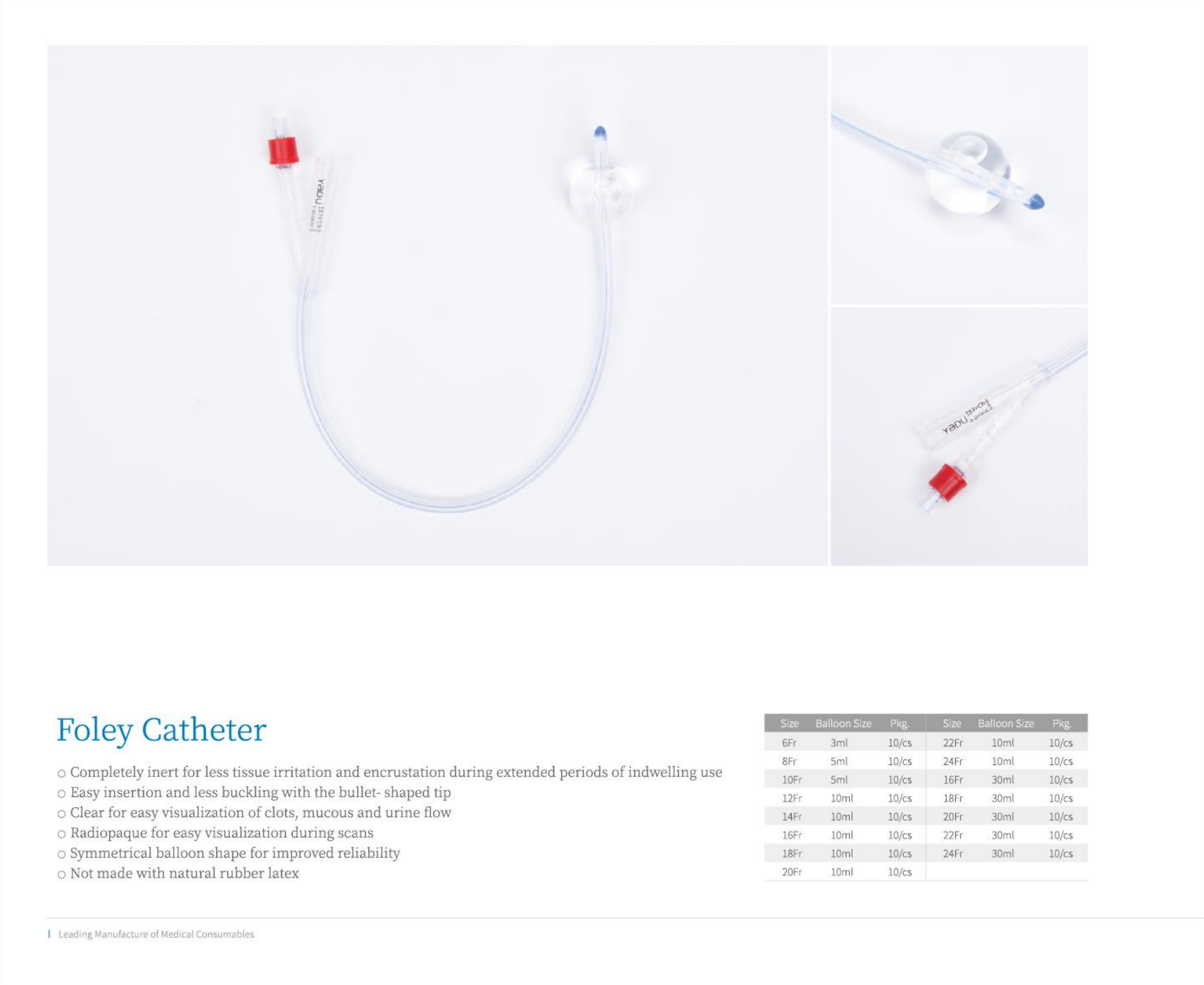1. Selection of the specifications of the catheter: If the urine needs to be exported due to hematuria, the relatively thick 18, 20 and larger catheters can generally be selected. If urinary retention occurs and needs to be catheterized, you can choose a ureter with a size of about 16. If there is no such situation, you can consider whether there is a history of urethral stricture, and a larger ureter can be appropriately selected, but if the patient’s urethral stricture, it should be Choose a thin catheter when urinating.
2. Special attention should be paid to disinfection: during the catheterization process, attention should be paid to the disinfection of the foreskin, urethral opening, glans, external genitalia or female perineum to avoid retrograde infection of the urinary system during the catheterization process, which will lead to frequent urination, urination, Bladder pain, blood in the urine, etc.
3. Correct intubation: When intubating a male urinary catheter, the penis should be straight and perpendicular to the body, and the tip of the urinary catheter should be inserted from the urethra. When urinating in female patients, the urethral opening should be carefully observed, and the tip of the catheter must be inserted from the external opening of the urethral opening. If the catheter is accidentally inserted into the vagina, the catheter must be replaced immediately. The action of inserting the catheter must be gentle and slow, especially when it comes to the posterior urethra, it needs to be inserted after waiting for the sphincter to stretch. Do not insert in a violent manner, make sure the balloon is in the bladder, and inflate the balloon after seeing urine.
4. Drained urine volume: patients with urinary retention and those who need indwelling catheters should be drained in batches and time during the entire drainage process. The general method is to extract about 200 ml of urine every 5 minutes. If the retained urine stored in the bladder is 800 to 1000 ml, it is necessary to discharge the urine accumulated in the bladder in 5 times. Otherwise, due to rapid drainage, the bladder is likely to enter a low pressure state, resulting in severe low-pressure, decompression gross hematuria.
5. Standardized extubation: No matter what the reason is for catheterization, you should ask the doctor when you can consider removing the catheter or whether you need to indwell the catheter for a long time. During long-term indwelling catheters, attention should be paid to regular catheter replacement and standardized disinfection.
6. Other measures: When indwelling catheter, it is necessary to check whether the ureter falls off from time to time. The bladder can be flushed with sterile medicine every day. It is recommended to replace the catheter every 5 to 7 days to keep the urethra loose, and then insert it again.
Patients must actively cooperate when medical personnel perform catheterization procedures. After catheterization, you should be careful not to tamper with the catheter. When the catheter comes out due to its own reasons, it may cause bleeding. If it is found that the patient has an uncomfortable reaction to himself after catheterization or the symptoms do not improve after catheterization, the patient’s medical staff should be notified immediately, and the doctor will choose the corresponding treatment method after analyzing the condition.
Post time: Aug-04-2022


